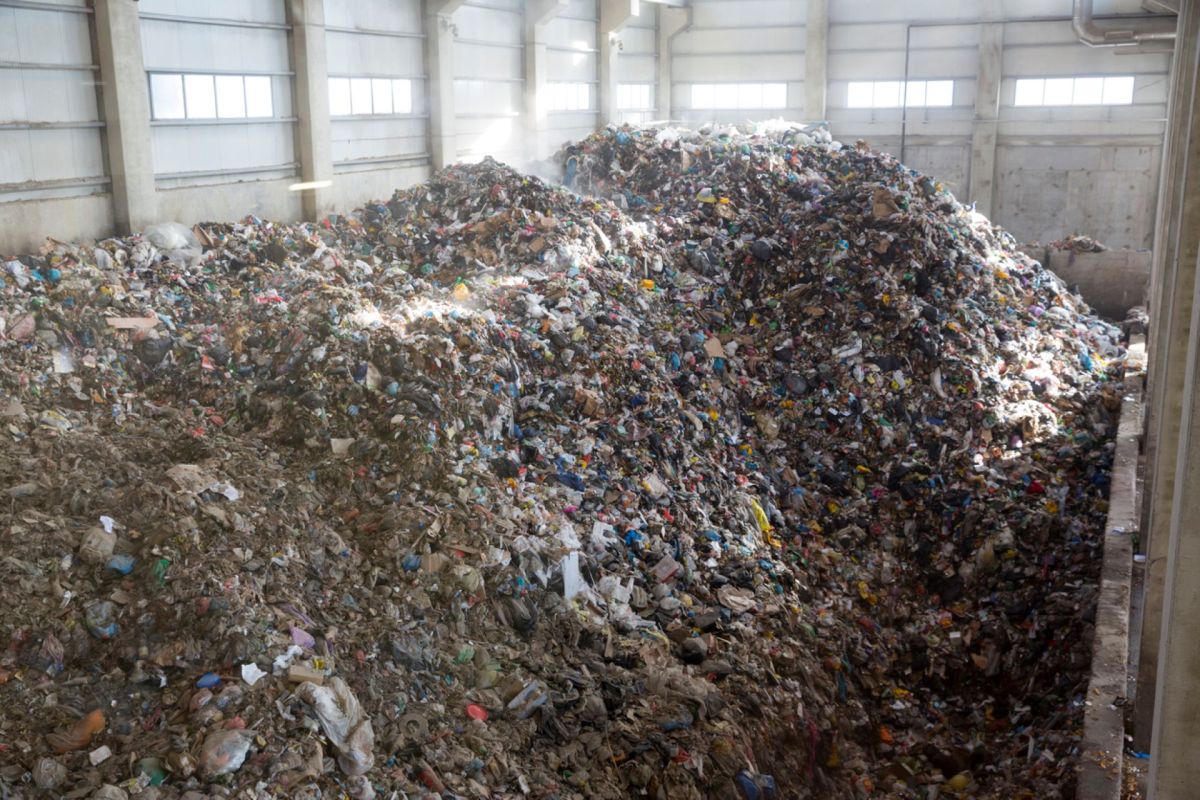Residents of a small island off the southern coast of England recently received some big news. The waste-to-energy plant on the Isle of Wight has begun test operations.
It's been a long time coming for the British island, as the plant was supposed to be up and running back in 2019. Testing at the plant that was done in January produced 386,663 kilowatt-hours, enough to power about 7,000 houses for a week, per a BBC report.
Waste-to-energy — WtE, or sometimes called EfW, energy-from-waste — plants take trash, like paper, plastic, yard waste, and wood, and turn it into energy. The waste is burned, heating water, which turns into steam that is then used to turn turbine blades, generating energy.
The WtE process prevents waste from ending up in a landfill, where it would slowly decompose and release planet-heating methane gas into the atmosphere. It can turn 2,000 pounds of garbage into 300-600 pounds of ash, reducing the volume of waste by about 87%, and turning it into energy instead.
The process clearly has its benefits, though burning the garbage can create other problems.
WtE is controversial because incinerating waste releases toxic chemicals and pollutants. Multiple sources, including the Natural Resources Defense Council and Zero Waste Europe, have condemned the method as toxic and called it a form of greenwashing.
Studies have shown that chemicals and pollutants enter the air, water, and food supply, negatively impacting the health of local residents. While much of the pollution was linked to poorly run and older facilities, it's still being determined if newer incinerators can filter out enough pollutants.
All that said, studies have found the process to be cleaner than burning dirty energy sources like coal or oil. So when you combine it with the ability to reduce waste heading to landfills that still creates its own air pollution, in several ways it's a better energy source than many traditional power sources.
It's an ongoing discussion as we transition away from dirty energy sources we've depended on in the past. Every step away from burning those fuels is a step in the right direction.
However, many climate experts argue that investing in infrastructure that is still producing pollution — instead of much cleaner, renewable sources like wind and solar — is like putting a band-aid on a bullet wound.
Copenhagen believes it can lay claim to the best version of this technology with its CopenHill "cathedral of waste-to-energy" power plant, which also has an incredible skiing slope built into and around it. Its designers have shown off the plant and said its air emissions are almost entirely water vapor and carbon dioxide, at lower levels than coal or gas, and that it's "the cleanest waste-to-energy power plant in the world."
While the new Isle of Wight facility has not made such claims or given detailed public information about pollutants from its testing phase, a council spokesperson for the new facility said they've got a close eye on the tests "to ensure the facility meets operational standards and provides the island with a long-term solution for non-recyclable waste disposal, generating electricity with the potential for heat recovery."
As a wider society, if we can develop more ways like CopenHill to utilize WtE without exposing residents and wildlife to the chemicals and pollutants it produces, then it would be a huge win for managing our enormous waste problem.
Join our free newsletter for weekly updates on the coolest innovations improving our lives and saving our planet.









